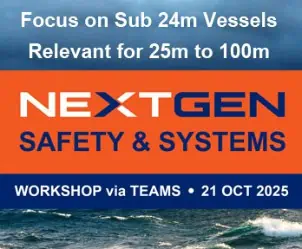Sustainable Marine is adopting cutting-edge aerospace and wind energy technology in a new project to drive the evolution of tidal turbine foils (blades).
The marine renewables specialist is leading the EvoFoil project in partnership with German organisations M&D Composites Technology and Leibniz Universität Hannover Institute of Production Engineering and Machine Tools.
The EvoFoil project aims to deliver a series of design innovations to optimise the performance of tidal turbine foils while driving down production and operation costs.
Sustainable Marine is receiving advisory services and up to $578,244 in research and development funding fromthe National Research Council of Canada Industrial Research Assistance Program (NRC IRAP) for the two-year project. Additionally, the German partners on this project are receiving funding support from the German Federal Ministry for Economic Affairs and Energy (BMWi) through the Central Innovation Programme for SMEs (ZIM).
“The project will address key areas of the foil design including the tip geometry and the overall composition involving a new ‘multi-material’ concept. It will enable us to deliver an extensive field and lab testing campaign combining decades of knowledge and experience from across sectors to take our tidal foil technology to the next level,” said Ralf Starzmann, Head of Power Systems at Sustainable Marine. “Our German partners bring strong expertise in their respective fields including world-class knowledge from the aerospace and wind energy sectors. We believe there are several key interventions which can be made to further optimize our foil performance and help drive evolution in the tidal energy market more broadly. These design factors will play an important role addressing areas such as energy extraction, power curve deterioration and operating and maintenance costs. EvoFoil represents another important step to reduce Levelized Cost of Energy while reinforcing the stature of tidal power as a competitive future energy source.”
Earlier in 2021, Sustainable Marine launched its new 420kW PLAT-I 6.40 floating tidal energy platform in the Bay of Fundy, Nova Scotia, Canada which will form part of the world’s first floating tidal energy array. The device is currently undergoing commissioning and testing in Grand Passage before its deployed to Fundy Ocean Research Centre for Energy (FORCE).
The site experiences some of the most extreme tidal ranges in the world – with 115 billion tonnes of water surging in and an out, twice a day – creating a resource from which circa 7GW of power could be extracted.
“While offering tremendous natural power the Bay of Fundy also places a range of environmental conditions on the tidal turbine foils including thermal changes, corrosion and abrasion, adding to hydrodynamic loads during operation,” said M&D Composites Technology Managing Director Tim Markwald. “Our mission with the EvoFoil project is to drive innovation to work in harmony with these immense natural forces. This will involve the use of innovative manufacturing methodologies in order to reduce manufacturing costs. In addition, we are exploring different surface treatments to protect against erosion given the harsh environment of the Bay of Fundy.”
“We are currently researching a new material concept to improve the mechanical behaviour of the foil and help counteract the various loads,” said Carsten Schmidt Leibniz Universität Hannover Head of Research Group High Performance Production of CFRP-Structures. “This ‘multi-layer’ concept is being influenced by studies on the current foil structure made of carbon fibre reinforced plastic and the scientific findings of the German Research Foundation “Multilayer-Insert” project. The innovation will enable the load carrying areas of the foil to be partially reinforced with thin metallic sheets, improving adaption to the turbine drive shaft boosting durability and strength. More intense work is now required to manage the increase in scale and geometrical complexity of the metallic inserts to accomplish a proper load transfer from the foils root to the turbine hub.”
The news comes as German and Canadian Governments recently stepped-up efforts to explore the joint development of green hydrogen from Canadian renewables for export to Germany.











